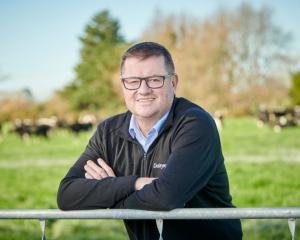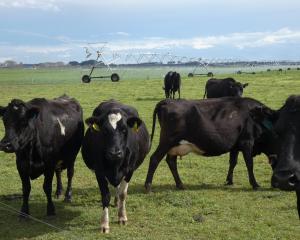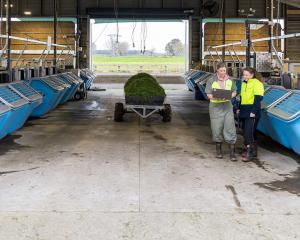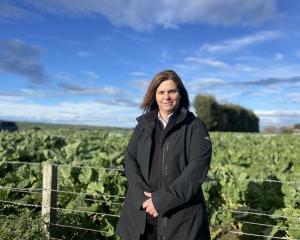
The finishing touches are being put on a project to add another dozen sets of clusters to a milking shed to milk more cows on a dairy farm in Eastern Southland.
Frosty mornings and clear days have been allowing people to do the work to extend the shed to a 36-a-side on Glenstuart dairy farm, which borders the state highway between Mataura and Clinton.
Last week, engineers Neil Hansen and Brayden King were doing steel work and Liam Sell and Craig Uren were installing milking plant.
The milking shed refurbishment also includes an effluent system upgrade and a new greenwash system.

However, two cows calved a week earlier than expected, both mothers producing twin calves.
Both cows had to be milked into buckets for a day.
Glenstuart owner Ray Dickie said a 24-a-side milking shed was built about 30 years ago, replacing an eight-bale walk-through system.
The intention was for the 24-aside shed to have enough capacity to milk any size of herd on Glenstuart.

About 330 cows had been milked for the past two seasons.
On average, each cow produced about 515kg of milksolids.
A new consent had been granted for up to 450 cows to be milked from this season.
To boost the herd size to 450, in-calf cows had been bought from across Southland and Otago.

Ray’s grandfather William Dickie bought the 100ha sheep farm Glenstuart in 1913.
An aunt of Ray needed to drink milk for health reasons, so William established a herd, rather than run a single house cow.
"One cow wasn’t enough for granddad and if he had to milk cows, they had to be good ones."
Glenstuart Holstein Friesian Stud was established in 1919.

The oldest child in his family, Ray left school, age 15, to help his late parents, Alton and Joyce, on the farm.
About two years later, the family bought a neighbouring 190ha property, increasing Glenstuart to 290ha.
The enjoyment of running a Holstein Friesian stud had kept Ray working in the industry.
"I love the pedigree cow side of it. I’d probably struggle if I was just milking cows."

Alton had made genetic gains in the stud by importing semen to artificially inseminate cows since the 1960s.
This season, Ray was hoping for a heifer from an in-calf cow, a daughter of North American sire Peak Ozone.
"We’re not frightened of using the genomic bulls and we have faith in the numbers."
Bull Peak Ozone fitted the criteria of the stud’s breeding objectives including fertility and production components, such as milk fat and protein.

North American genetics were favoured in the stud’s breeding programme, which targets a balanced cow, of medium size with good fertility and conformation, due to the distances it needs to walk over rolling terrain.
"When they are walking up and down hills, if they don’t have good legs and feet, they don’t last."
Calving started brilliantly last year but then the farm got "hammered" by a wet spring.
"It put a handbrake on everything."

Autumn and winter farming conditions had been kind this year and he feared it could mean bad weather was on the way.
"I’ve been around a wee while and Mother Nature tends to even out and I’m worried we might have to pay again at some stage."
For now, he was looking forward to calving.
"It is an exciting time for a breeder or real dairyman."













